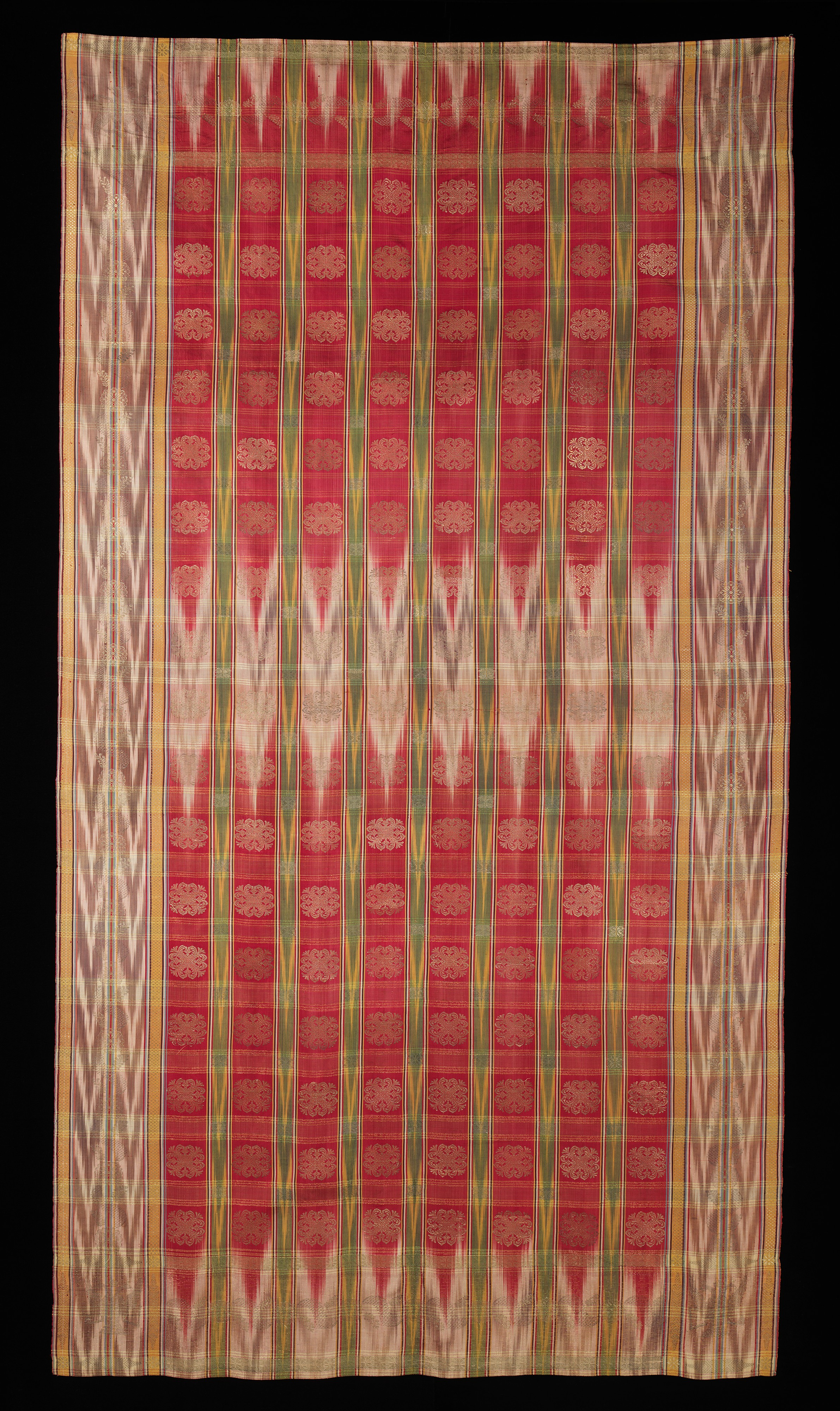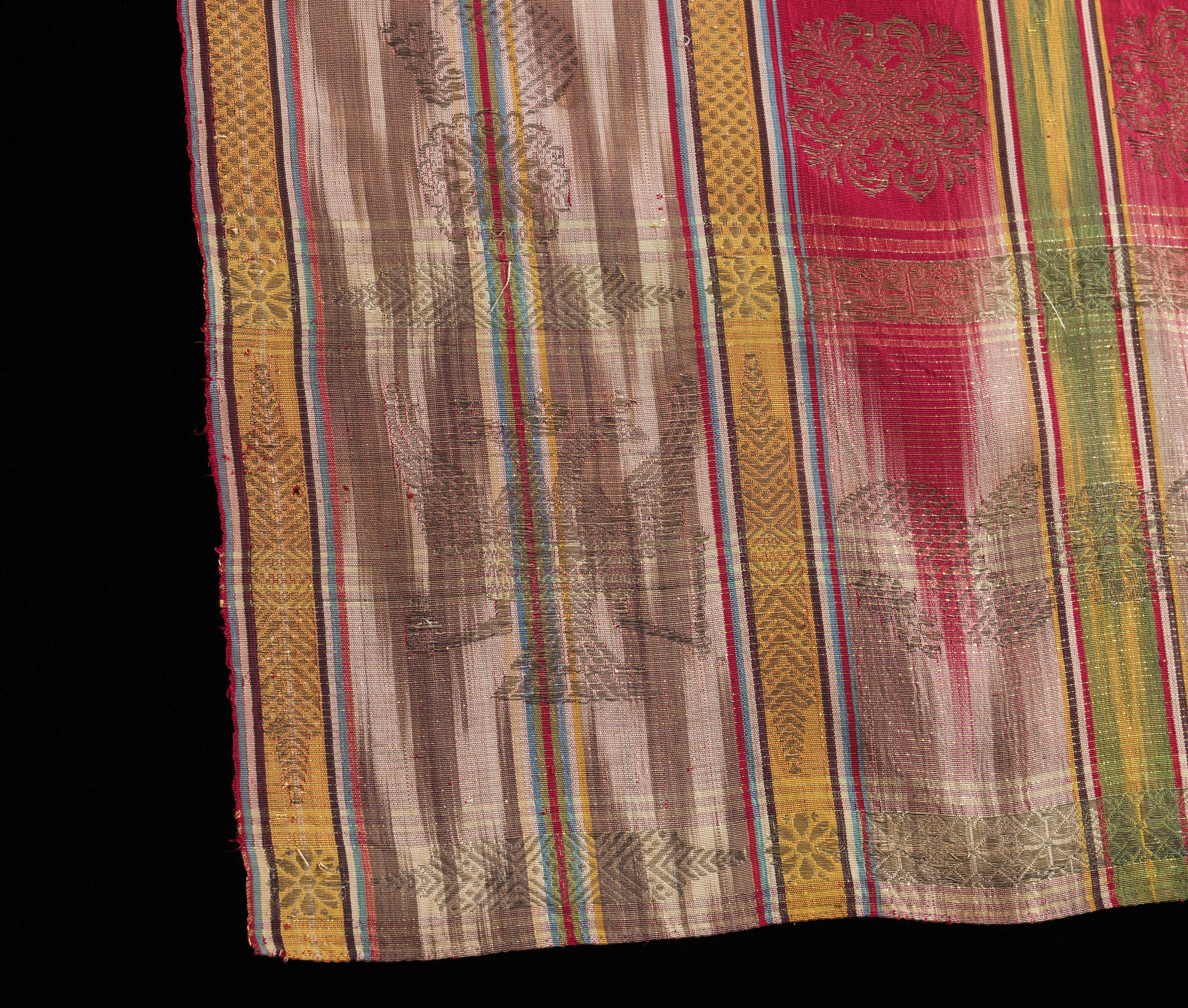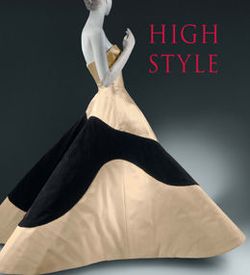Wedding headdress
Not on view
This object is from the collection of Natalia de Shabelsky (1841-1905), a Russian noblewoman compelled to preserve what she perceived as the vanishing folk art traditions of her native country. Traveling extensively throughout Great Russia, she collected many fine examples of textile art of the wealthy peasant class. From the 1870s until moving to France in 1902, Shabelsky amassed a large collection of intricately embroidered hand-woven household textiles and opulent festival garments with rich decoration and elaborate motifs. The Brooklyn Museum holdings include many fine examples including the majority of the garments. Portions of Shabelsky's collection are also housed at the Museum of Fine Arts, Boston, the Cleveland Art Museum, and the Russian Museum of Ethnography in St. Petersburg.
This spectacular wedding veil is of a process known as ikat, where either warp or weft yarns are resist-dyed in a pattern before weaving, producing a characteristic jagged edge. The process is common to many cultures, but some of the most spectacular were silk examples from Uzbekistan, a region belonging to the 19th-century Russian Empire. The ikat process itself is very time-consuming, and the pattern in this textile complex. The addition of gold threads signifies the importance of both the wearer and its function. Each corner is further decorated with the imperial eagle, an heraldic Russian symbol meant to represent the secular and religious sovereignty of the monarch, as well as power over the East and West.
This image cannot be enlarged, viewed at full screen, or downloaded.
This artwork is meant to be viewed from right to left. Scroll left to view more.






